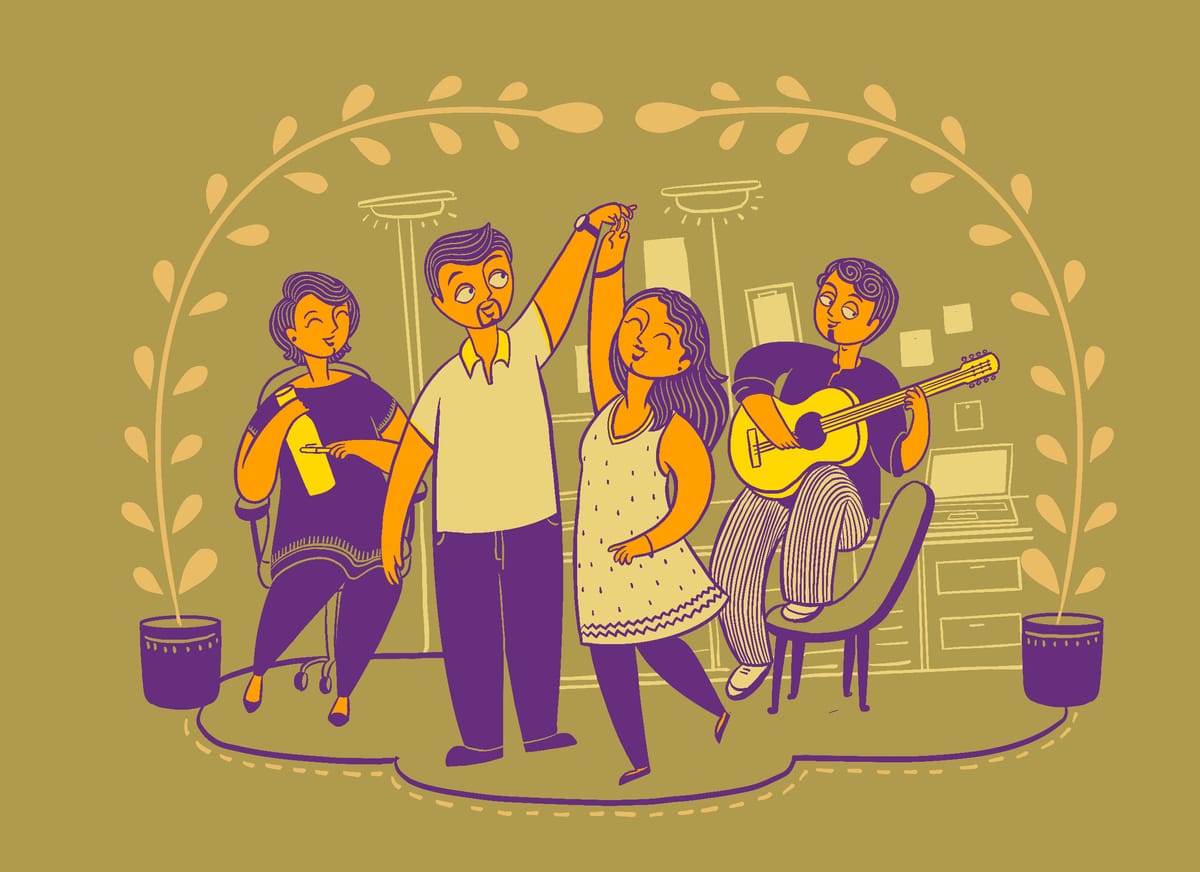Work-life integration: Balancing personal and professional wellbeing

Is it not amusing to notice how we use the term ‘work-life’ while talking about the work front? It goes on to show the role work plays in all our lives. When you call something an important area of your life, it runs an important power to affect you.
When COVID-19 happened, there was a major shift in the corporate world, and the concept of remote work or work from anywhere was introduced on a large scale across the globe. Work-life integration is the intersection of work and your personal life where you can fulfill both responsibilities without having to compromise on one. It can be tough to practice but once you start practicing it, it can help you live your life in a more fulfilled manner. A great example of work-life integration would be something called a ‘digital nomad’ mode where a person keeps travelling across cities or countries while working remotely and getting things done as and when expected. This way the person is choosing to focus on both their work and their passion for traveling.
Work-life integration is NOT the same as work-life balance. Let us have a look at the fundamental differences between the two.
Work-life balance focuses on both these aspects but separately. Achieving a healthy work-life balance requires one to set very rigid boundaries where their working hours and commitments will not get in the way of their time and duties. There is hardly any overlap between your personal life and work. Some people may also choose to use completely different devices for their personal and professional work. An example of work-life balance could be completely switching off your office devices from Friday evening to Monday morning or looping people in on your ‘out of office days’. This clear demarcation helps in setting clear boundaries for yourself and others. Switching between these two roles can be challenging as you need to have a different personality, attitude, and tone for both of these commitments. That is where work-life integration comes in handy.
Work-Life Integration, on the other hand, focuses on finding that common ground or an intersection where both these things can connect. It may be through ‘bring your spouse to the office’ day or a team potluck and outing. Work-life integration does not specifically assume rigid boundaries between the two areas. The intention behind it is to help employees reduce the burden or stress of always having to choose between the two.
How does work-life integration impact your wellbeing?
Reduced stress for employees: Having to prioritize between the two can lead to internal as well as external conflict for the employee. But marrying work and personal life together can help you achieve both things without having to compromise on the other. This increased freedom of choice results in employees feeling relieved and supported on a personal as well as professional level.
Opportunity to work on personal development: You get to focus on upskilling yourself and exploring options that facilitate your personal growth. Feeling a sense of fulfilment only fuels your purpose and motivates you to keep going and pushing your limits.
Improved decision-making and time management skills: Playing an active role in personal and professional life demands a certain level of planning things, communicating with everyone, and setting healthy boundaries. These skills enhance the way you make any decisions. They also help you develop a better structure and routine resulting in enhanced time management.
Ways to implement work-life integration in your organization:
Before implementing any strategy, it is crucial to go conduct a need analysis to understand employee needs better. These can differ based on the sector and population of employees.
Promote compassionate inquiry: Your employees could be playing multiple roles at the same time. They could be an employee, a working mother, or a single parent dealing with a loss. Their story extends beyond the work they do as well. Individual check-in sessions with employees can foster increased understanding and enhanced trust. This also allows employees to feel emotionally supported at their workplace.
EAP: Employee Assistance Programs focus on the overall wellness of the employees. The programs may include physical and emotional wellbeing and include activities like wellness retreats, and yoga sessions. Listening circles. Manah Wellness offers a range of EAPs to provide support and promote psychological safety at workplaces.
Introducing platforms to up-skill or showcase talent: This is a great way to encourage young talent or even help experienced employees discover new talents and hobbies and up-skill themselves. Companies can subscribe to online resources or hire a service that creates a platform for employees to learn new things and grow beyond their comfort zones.
Socializing: If employees are comfortable, they can bring up the significant people in their lives to a social gathering. It may be a spouse, a parent, a sibling, or their partner. Merging significant areas of your life can induce a sense of harmony and balance. It is a great opportunity to draw an intersection between the two and connect on a personal level.



